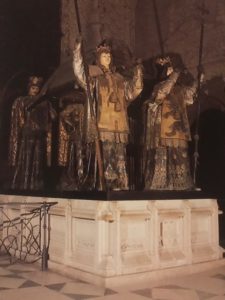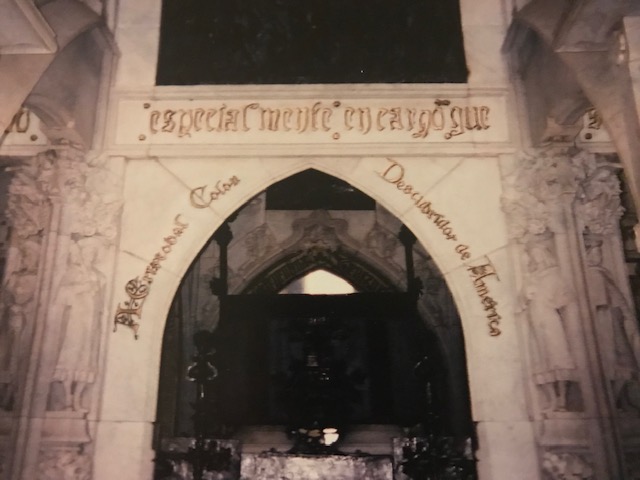A few years after I had traveled to Spain, I exchanged a timeshare week in the Dominican Republic.
What We Found in Santo Domingo
In the middle of my lazy beach week, we took a side excursion into Santo Domingo. While seeing the many historical sites, like Alcazar de Colon, the National Presidential Palace, etc. we visited the Columbus Lighthouse. The Columbus Lighthouse was built in the early 1990s to celebrate the 400th anniversary of Columbus’ first trip to the Americas. The building is quite unique and cross-shaped, if you were to look down upon it from the air. We read the information about the museums’ exhibits, which were full of different maritime artifacts. Then we found out that part of the building is a mausoleum and the final resting place of Columbus’ bones.
How could that be? My mother and I looked at each other with questioning glances. We thought that this can’t be right, since we had seen his tomb in the Seville Cathedral in Spain?

How the Disagreement Started
Both countries have been quarreling for over a century as to which had Columbus’ remains. We later read that both countries could be right. His remains may have been separated to ensure his bones did not fall into adversarial hands.
While alive, Columbus informed his family that he wished to be buried in the New World upon his death. However, when he died, his family felt there was no sufficiently respectable church in the Americas worthy of his remains. Therefore, Columbus was temporarily buried at a of couple monasteries, first in Valladolid, Spain, and then in Seville. Later, Columbus’ daughter-in-law sent his remains along with her husband’s to the cathedral in Santo Domingo.
Still Questions After DNA Testing
The disagreement starts after about two centuries passed. Columbus’ remains were moved to Havana, Cuba, according to the Spanish. They moved them to avoid having them fall into the hands of the French or later the Americans. The Dominicans say that his remains never left Santo Domingo. They think that perhaps his son Diego’s remains were the bones sent to Cuba and on to Seville. So, for over 100 years now, both countries still claim to have the bones of Christopher Columbus.
At least we know one thing now, thanks to Spanish researchers in 2003. The University of Granada performed DNA tests on the bones in the Seville crypt. They compared the DNA to known relatives (a brother and another son). Sadly, the results were inconclusive and identified that only about 15% of the Seville remains were some of Columbus’. So far, the Dominican government has refused to agree to allow DNA testing on their Columbus remains. Therefore, it is still unclear where Columbus’ bones truly lie.


